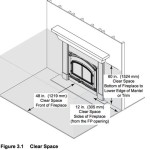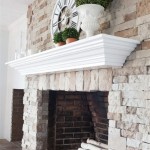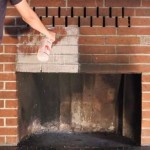Logs for Fireplace: A Comprehensive Guide
Fireplaces have long been a source of warmth, comfort, and ambiance in homes. A crucial element in achieving a roaring fire is the selection and preparation of appropriate logs. Choosing the right logs can significantly impact the efficiency, safety, and overall enjoyment of a fireplace experience. This article will provide a detailed overview of the various aspects of logs for fireplaces, encompassing wood types, characteristics, preparation methods, and safety considerations.
Understanding Wood Types
The type of wood used in a fireplace directly influences the heat output, burn time, and amount of smoke produced. Woods are generally categorized into two broad groups: hardwoods and softwoods. Hardwoods are typically denser and burn longer with a higher heat output compared to softwoods. This is due to their tighter grain structure and higher density.
Common hardwood species suitable for fireplaces include oak, maple, ash, birch, and beech. Oak is a popular choice due to its high density, which allows for long-lasting burns and substantial heat production. Maple is another excellent option, providing a steady and clean burn. Ash is known for its easy splitting and relatively low smoke production. Birch offers a pleasant aroma and quick ignition, making it suitable for starting fires. Beech is a dense hardwood that burns with a stable flame and low smoke.
Softwoods, on the other hand, are less dense and burn faster with a lower heat output. They tend to produce more smoke and creosote, a flammable byproduct that can accumulate in chimneys and pose a fire hazard. While not ideal for primary burning, some softwoods can be used for kindling or to quickly start a fire. Examples of softwoods include pine, fir, spruce, and cedar. Pine is readily available and easy to ignite, but it burns quickly and produces a significant amount of smoke and creosote. Fir is similar to pine in its burning characteristics. Spruce, while less smoky than pine, still burns relatively quickly. Cedar has a distinctive aroma and can be used sparingly for aesthetic purposes, but its high resin content makes it unsuitable for prolonged burning.
Proper Log Preparation and Seasoning
The moisture content of wood is a critical factor affecting its burning efficiency. Freshly cut wood, often referred to as green wood, contains a high moisture content, typically ranging from 30% to 50%. Burning green wood results in significantly reduced heat output, increased smoke production, and greater creosote buildup. Seasoning is the process of drying wood to reduce its moisture content to an acceptable level, generally below 20%.
Seasoning involves splitting the logs and stacking them in a way that allows for adequate air circulation. The ideal stacking method involves creating rows with spaces between the logs to facilitate airflow. The woodpile should be elevated off the ground, either on pallets or on a layer of logs, to prevent moisture from wicking up from the soil. The top of the woodpile should be covered to protect it from rain and snow, but the sides should remain open to allow for ventilation. The seasoning process typically takes six months to a year, depending on the wood species, climate, and stacking method.
Measuring moisture content is crucial to ensuring wood is properly seasoned. A moisture meter can be used to accurately determine the moisture content of the wood. The meter is inserted into a freshly split face of the log, and the reading will indicate the percentage of moisture present. Logs with a moisture content above 20% should be allowed to season further. Burning seasoned wood results in a cleaner, hotter, and more efficient fire, minimizing smoke and creosote buildup.
Safety Considerations for Handling and Burning Logs
Safety should always be a top priority when handling and burning logs in a fireplace. Proper handling techniques can prevent injuries, and adhering to safety guidelines can minimize the risk of fire hazards.
When handling logs, wear appropriate personal protective equipment, including gloves and eye protection. Gloves protect hands from splinters and abrasions, while eye protection prevents wood chips from entering the eyes. Use proper lifting techniques to avoid back injuries. Bend at the knees and keep your back straight when lifting logs. Avoid carrying excessively heavy loads. Consider using a log carrier or wheelbarrow to transport logs safely and efficiently.
Before building a fire, ensure the fireplace and chimney are in good working order. Have the chimney inspected and cleaned annually by a qualified professional to remove creosote buildup. Creosote is highly flammable and can cause chimney fires. Ensure the fireplace damper is open before lighting the fire to allow smoke to escape. Use a fireplace screen to prevent sparks and embers from escaping into the room. Never leave a fire unattended, and always extinguish it completely before leaving the house or going to bed. Dispose of ashes properly in a metal container with a tight-fitting lid. Keep the container away from flammable materials. By following these safety guidelines, homeowners can enjoy the warmth and ambiance of a fireplace while minimizing the risk of accidents and fire hazards.

Small Gas Logs Reduced Depth Vented And Ventless

How To Choose Your Gas Fireplace Logs

How To Light A Log Fire Guide

Vented Gas Logs Heater Or Decorative Bart Fireside

American Gas Log Cordoba 30 In Vented Natural Fireplace Logs Complete Set With Manual Safety Pilot Kit Cch30hd2ng The Home Depot

Fireplace Gas Logs Va Bon Air Hearth Porch And Patio

Faux Log Stack

Barton 10 Pieces Ceramic Fireplace Log Stack Wood Gas Realistic Logs Set Indoor Outdoor Com

The Best Gas Log Sets For 2024 Fireplaces Direct Learning Center

Gas Log Set S Installation Vented Logs For Your Fireplace
Related Posts








